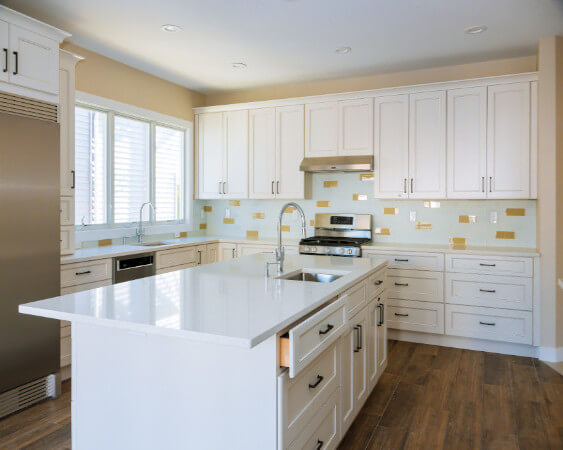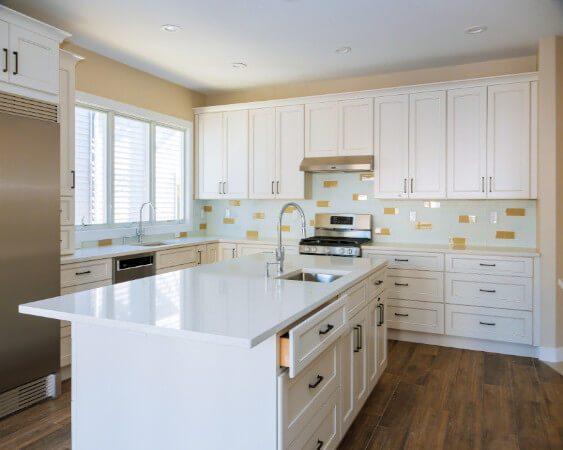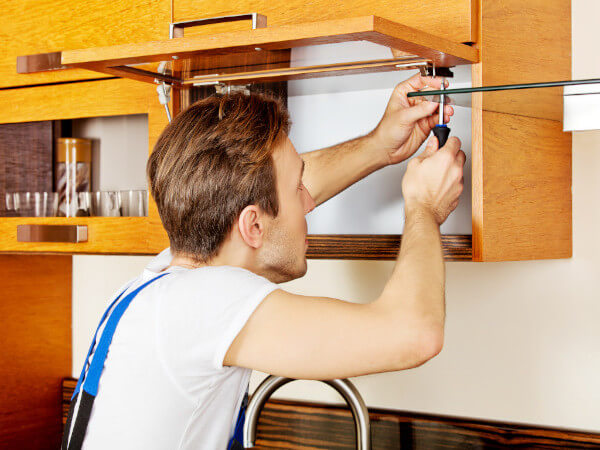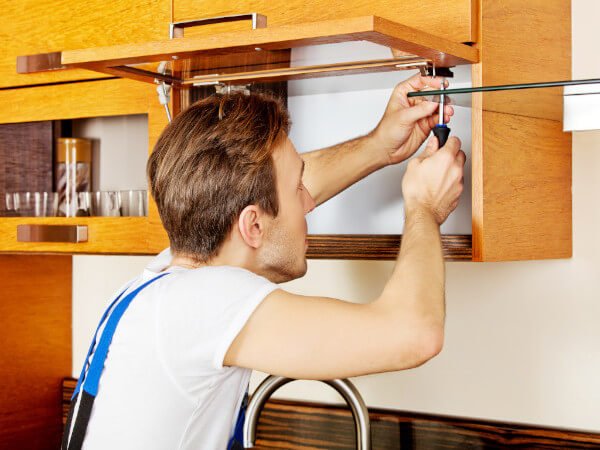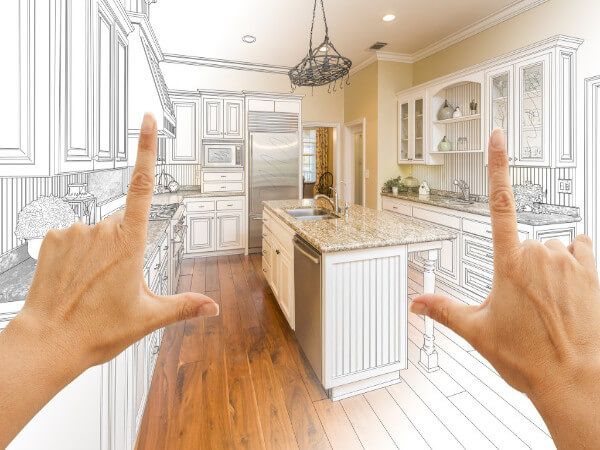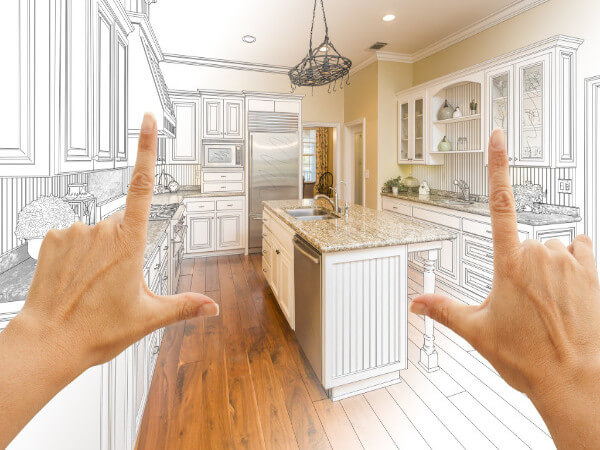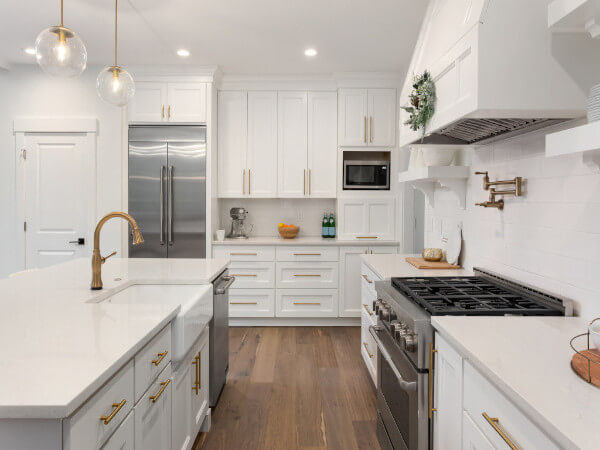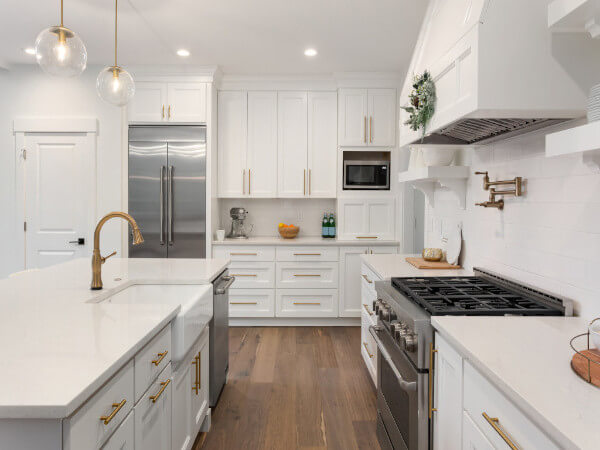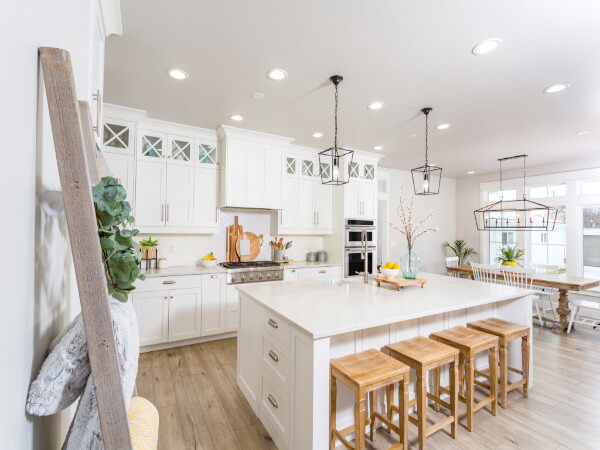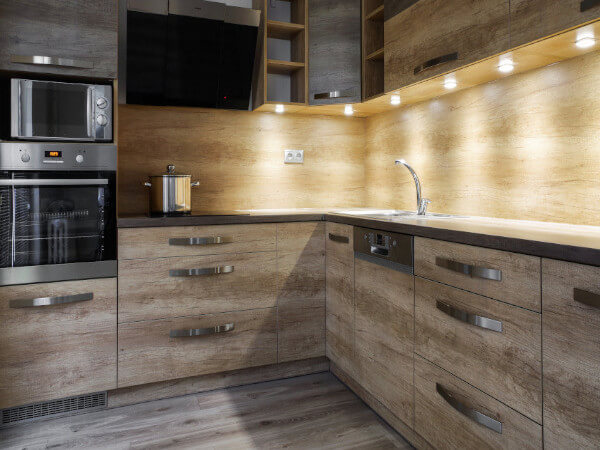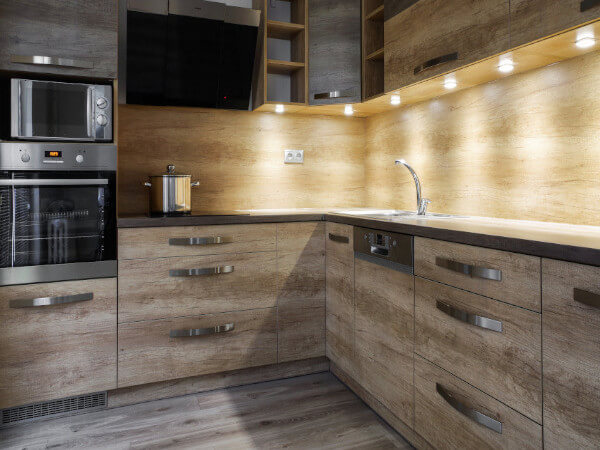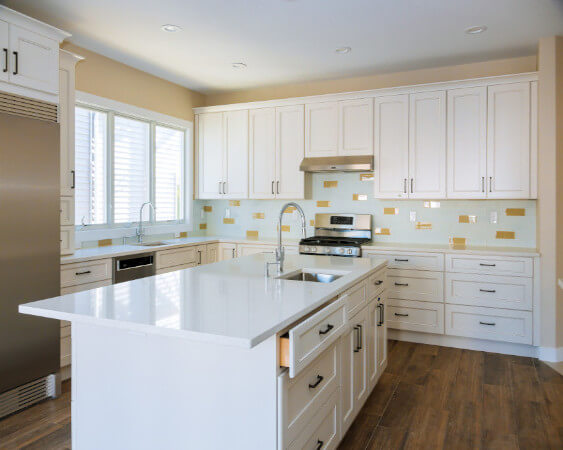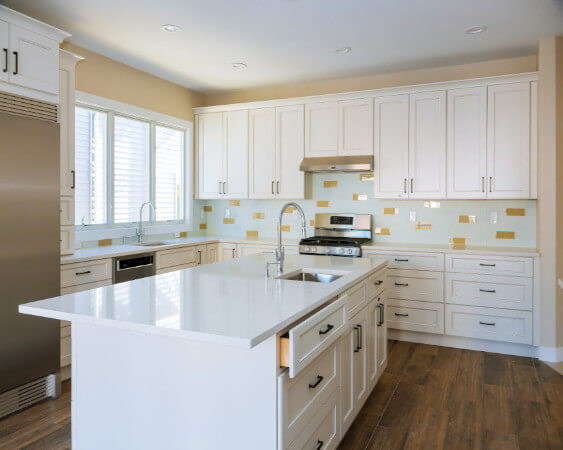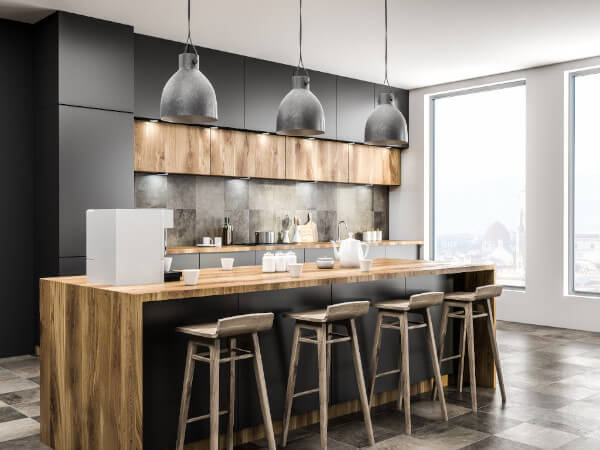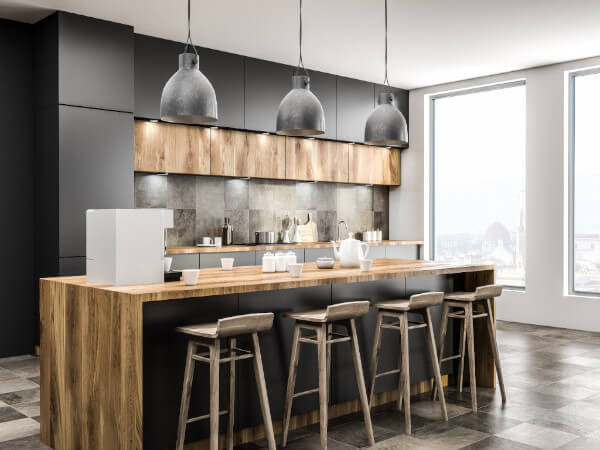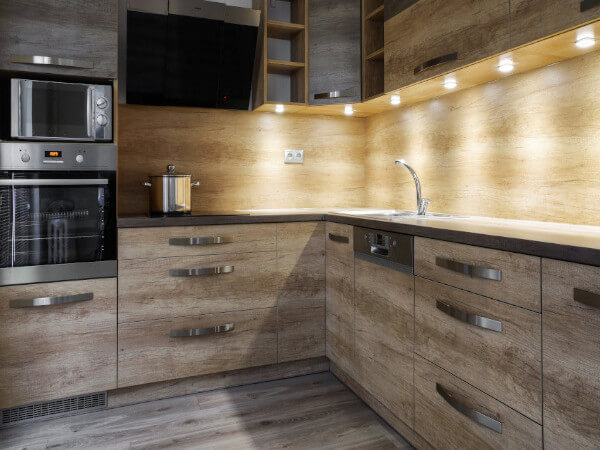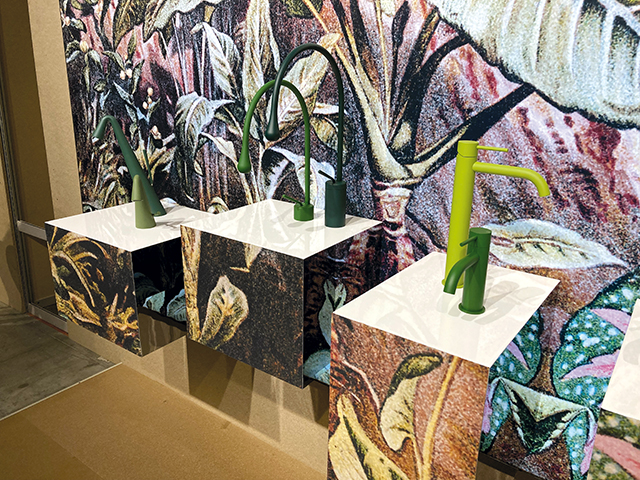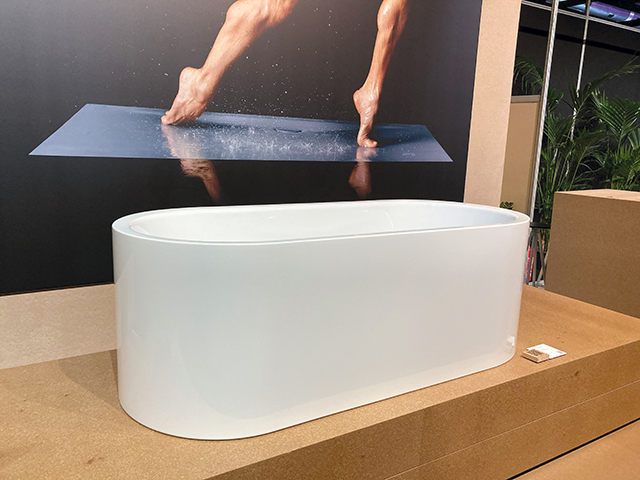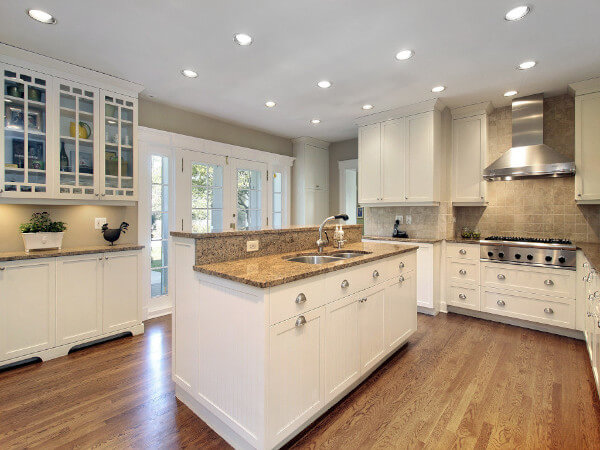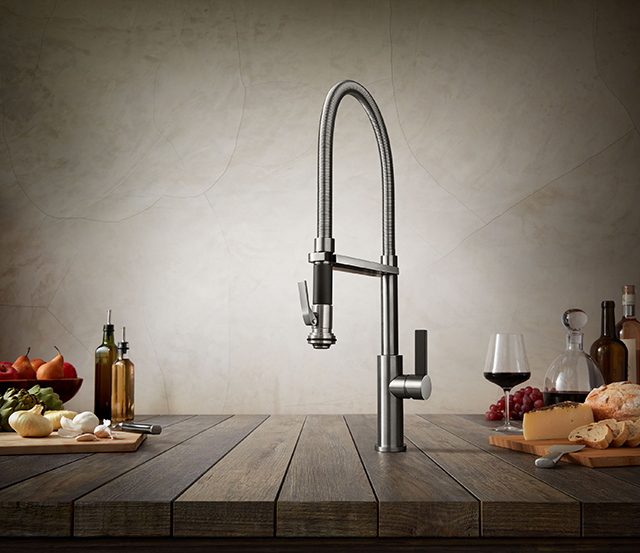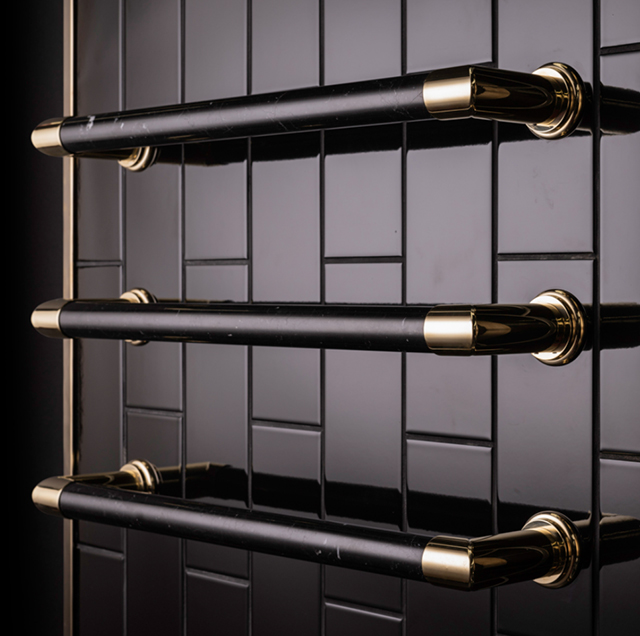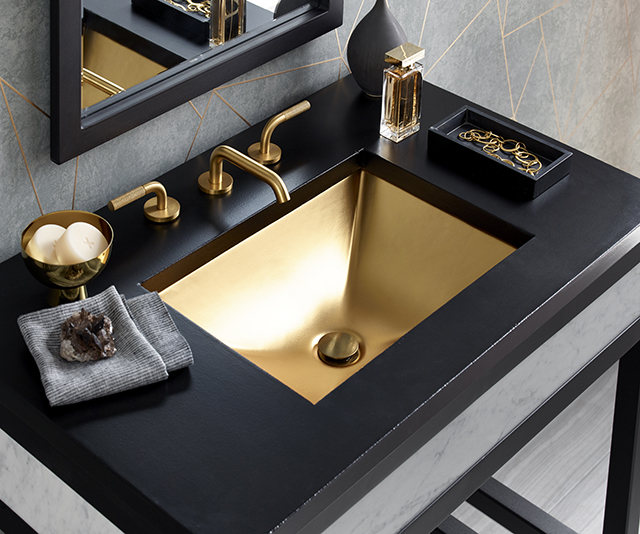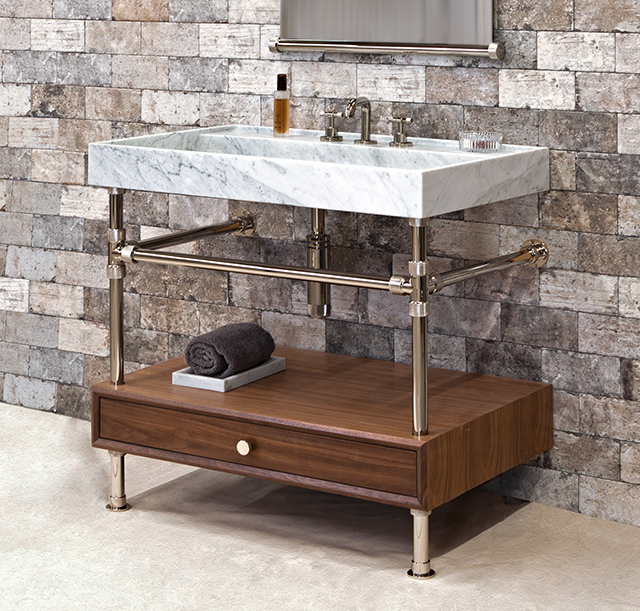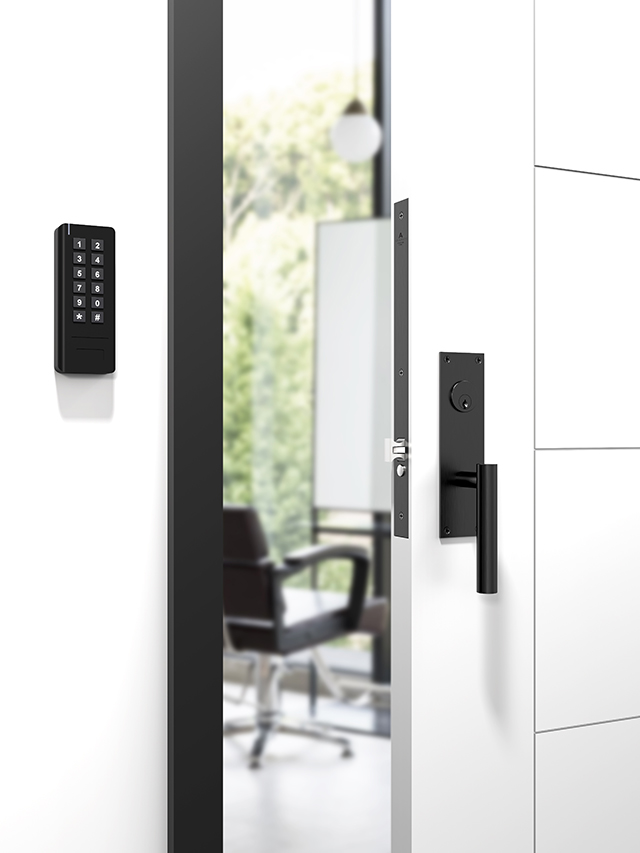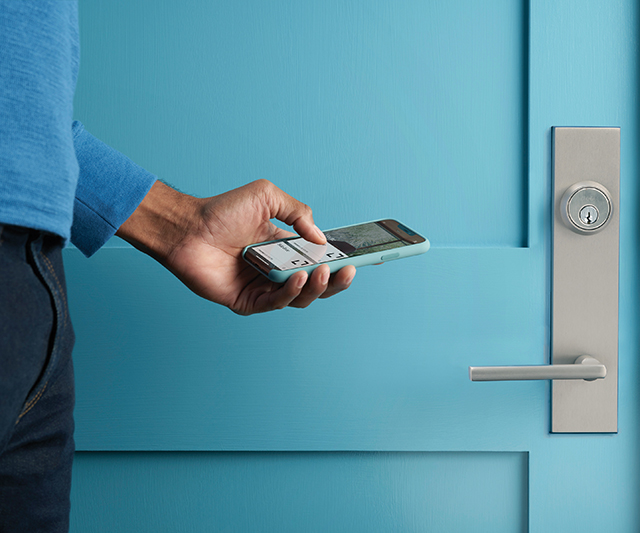The kitchen is the command center of many homes, with countertops called upon to handle more and more tasks. Food preparation is just the start; surfaces in the kitchen are also used for work, school, pet care and much more. These myriad uses require countertops that are strong and easy to care for. And, because they are so prominent in the kitchen, these surfaces must also look great and complement the other elements in the space.
“Consumers want products that are easy to maintain, durable and able to sustain a very active lifestyle,” says Massimo Ballucchi, v.p. kitchen and bath business at Cosentino North America, based in Coral Gables, FL. Customers are upgrading their countertops for aesthetic reasons as well, he says. “They want products that are making their homes a showcase…products they can admire for a long time.”
Colors and finishes for surfaces vary greatly based on individual style and taste, but there’s a clear move towards incorporating natural elements. “Designs and materials that are inspired by nature continue to lead the way in home decor trends,” stresses Gwen Petter, director of design for Temple, TX-based Wilsonart. “We’re seeing it everywhere from décor and paint colors to textiles and building materials, including countertops. Research shows that nature can offer mental health benefits including decreasing stress and relieving anxiety, as well as improve happiness and well-being.”
Material choice is often driven by convenient maintenance. “With a wave of new home buyers, we’re still seeing many homeowners unaware of the varying levels of durability and maintenance required when it comes to their countertop choices, and they’re shocked when they realize the maintenance involved with many popular options, such as marble,” offers Gerri Chmiel, residential design lead at Formica Corporation in Cincinnati, OH. “Interior designers say homeowners most often ask for the look of marble or quartz, but also want durable surfaces that are easy to clean and maintain,” she adds.
This is leading designers to recommend products that are low maintenance yet don’t compromise on modern, beautiful design. Colors that add warmth to the space – along with bolder colors, textures and materials that help make a statement – are also currently trending. That’s according to manufacturers recently surveyed by Kitchen & Bath Design News.
Natural Look Without the Wear
An organic, natural feel is desirable, but that doesn’t mean consumers are necessarily choosing natural stone. Maintenance concerns are driving the need for products that have the look of natural stone while offering higher durability. This has created a shift towards quartz, porcelain, laminate and solid surface.
“Consumers are most interested in performance, in-style yet timeless looks and materials that offer solutions,” Petter remarks. “The serene beauty of quartz is always in high demand, and it’s no surprise when you consider the material’s many benefits: on-trend elegant designs for any space, easy to clean and maintain, durable, stain resistant.”
“Solid Surface is quickly gaining traction as one of the most sought-
after countertops for its reliable durability, impact resistance and nearly effortless maintenance,” she adds.
The tendency of natural stone to stain and etch has driven the market towards porcelain, which offers the look, feel and depth of natural stone without the maintenance concerns, says Michael Zeitlin, executive director of Raphael Porcelain in Lodi, NJ. “Zero maintenance is something that every homeowner dreams of having when going for that look,” he states.
Maggie Ellis, residential marketing leader at Corian Design, based in Wilmington, DE, says they see users gravitating towards stone-like aesthetics as well as industrial looks such as cements and ironstone. “It really depends on the consumer, how they use their space and their personal style. In general, natural patterns are in demand,” she reports.
Practical Matters
Kitchen surfaces need to stand up to a wide range of activities, especially with the overlap between home, school and work these days. Durability, easy maintenance and cleanliness concerns have had a great impact on countertop trends, manufacturers say.
“Worry-free is a prerequisite to any surfacing in today’s world – whether it be flooring or countertop. That demand is here to stay,” stresses Sam Kim, senior v.p. – product at MSI in Orange, CA.
“Materials in homes need to be durable, to withstand the increased wear and tear and more frequent cleaning,” notes Ellis. Because outdoor spaces are being used more often, she adds, materials such as high-performance porcelain that can stand up to UV rays and the elements are in demand.
“We’ve seen a remarkable shift in consumer priorities to include a new focus on cleanliness and therefore countertop surfaces that can stand up to this new cleaning routine the world has taken on,” Petter states. “Materials that offer antimicrobial protection and stand up to rigorous cleaning are in high demand as we continue into this new normal.”
“Quartz, in general, has always been a durable and low-maintenance option for countertops,” adds Ed Rogers, executive v.p., US Surfaces, for Austin, TX-based Vadara Quartz Surfaces. “We are always looking for ways to improve our materials, and I believe consumers now are becoming more educated before they ever leave the house as to the type of product they want and how they need to take care of it.”
Bernadette White, v.p. at Cancos Tile + Stone in Southampton, NY says that, along with durability, the fact that porcelain comes in multiple thicknesses – allowing for a backsplash in a thinner material and thicker countertop while still book matching veining patterns – makes it a popular choice.
Warming Up
Manufacturers note that white is still the most prominent color for kitchen countertops, but warmer tones with texture and character, rather than stark, bright whites, are on the rise.
“Homeowners are looking for simple, grounding spaces that bring a sense of calm, so we’re seeing light, white spaces continue to dominate,” observes Chmiel. “People are comforted by what’s familiar, yet they’re craving something fresh and don’t want white to feel too stark, so we’re seeing an infusion of color into traditional palettes with an added hint of texture and drama.”
Ballucchi says the most sought-after trend right now is a white countertop with veining. “It showcases a clean look and the veins bring us back to a connection with nature and the everlasting richness of marble,” he explains.
The kitchen countertop is still dominated by white marble colors, concurs Taewoo Kim, surface product design director at LX Hausys America, in Atlanta, GA. “With a white base tone, gray, gold, navy and green vein colors that go well with the cabinet color are predominant,” he adds.
“While we see warm tones increasing in demand, the majority of the market is still demanding a lighter/white design aesthetic,” offers Jason Brown, director of Product Management for Architectural Surfaces, based in Austin, TX. He says veined marble porcelains, especially those emulating natural marble patterns, are seeing a surge.
Sam Kim remarks, “Warmer tones of both background and vein colors are gaining popularity, as are alternative finishes, such as MSI’s concrete- finish in quartz, which features the feel of concrete without any of the maintenance, staining, fingerprints, etc.”
Ballucchi adds that there’s a trend toward soft grays with beige undertones, sometimes known as “greige.” These colors add a contemporary feel, he notes, but can also go well with traditional cabinetry. Adding the beige to colder gray warms it up, bringing a more organic feel, he adds.
Bold Colors and Textured Looks
Homeowners seeking to make a statement are often moving towards darker or more vibrant colors, often mixed with other materials to add contrast, manufacturers say.
“Consumers are more open to adding color to their countertops,” Ballucchi notes. “Just as blues and greens are getting stronger in cabinetry, equally saturated, solid hues are also being sought out in countertops, as seen in Silestone’s newly-launched Sunlit Days Collection.”
Brown agrees that colors are currently in demand. “We’ve also seen an increase in bold and vibrant colors in residential settings for countertop designs – bold bathrooms, for example. People like a statement piece. We’re also seeing statement pieces on the kitchen island, while the rest of the kitchen is a calmer color/design,” he notes.
Mixing materials helps create visual interest while also maintaining practicality. “We are seeing an increased interest in mixing and matching materials to maximize functionality and beauty,” Ellis reports. “For example, in the kitchen, some homeowners are using Corian Quartz for the island and Corian Solid Surface for the perimeter, and 100% natural Corian Endura porcelain for the backsplash.” Homeowners are also experimenting with texture, she adds.
“With color and patterns, we’re seeing continued emphasis on calming light colors and a twist on classic patterns,” says Chmiel. “When it comes to texture, there’s an increased interest in natural finishes that further contribute to a grounded space. Expect to see a greater emphasis on woodgrains and metals that develop a patina over time.”
“The feeling of concrete emphasizing modernity is attracting attention around the city,” adds Taewoo Kim. “Concrete, which has a rough feel as if it has been painted white, different from the existing marble texture, is increasingly attracting attention from consumers who are looking for a stylish kitchen.”
Rogers believes that color selection is dependent on the individual homeowner’s tastes and preferences, and whether they want a monochromatic look or interesting movement. “Book-matched patterns are very popular, particularly for consumers with larger island workspaces and seating areas,” he said. There is also movement to develop different textures, he adds. “For us, specifically, more diverse/complex backgrounds using a combination of colors and veining techniques add depth to the material – making it look as natural as possible.”
On the Edge
Edge treatments may not be the top consideration when choosing countertops, but they must be part of the conversation, manufacturers note. “It is commonly said that the edge gives character to the project,” says Ballucchi. “Although the choice is based on personal taste, some edges do complement certain kitchen looks better than others.”
Zeitlin notes that, even in residential treatments, waterfall edges and full backsplashes made from the same material as the countertop are being used more often to give the space a cleaner, more luxurious look.
White reports that clients are wanting multiple built-up edges in the kitchen – such as 5cm thickness on the island and 2cm thickness on the countertops.
Brown offers, “Eased edge or flat polish is predominantly the edge of choice. Mitred waterfall counters are also trending now.”
Clean lines rather than bulky, ornate edges are in demand, according to Rogers. Waterfall edges on islands and full height backsplashes to match the countertops are also popular, he adds.
Functional upgrades
The longer people remain at home due to COVID-19, the more concerned they become with ensuring that the space works for them. “There has been a surge in demand for home renovation, as people are spending more time at home and want their space to be both functional and beautiful,” Ellis reports. “We will likely continue to see interest in materials that are highly functional, sustainable and beautiful.”
“The function of the kitchen, especially the island, has expanded from simple cooking to socializing and hobbies, and as the size of the kitchen has increased, the tendency to emphasize the island has increased, as well,” notes Taewoo Kim.
Chmiel believes the pandemic inspired many homeowners to reassess the look and function of their spaces. “With working and schooling from home still being a reality for many families, homeowners are prioritizing hardworking, multifunctional surfaces that exude comfort and serenity, creating a calming foundation for a kitchen or bathroom,” she explains.
This increased demand has created some challenges for manufacturers, including rising shipping costs, challenging supply chains and longer lead times. “Even with those challenges, demand remains very strong, and projects are being booked well into next year,” reports Rogers. “The pandemic has, ironically, gotten consumers to reconsider their living spaces [and desire] a more personal way to make it their own type of space that really reflects their needs and wants.”
Conscious Consumers
More and more, issues of sustainability and social responsibility play a role in the products consumers are choosing, manufacturers report.
“We’re seeing homeowners place a larger emphasis on using environmentally friendly materials,” Petter notes. “Wilsonart takes great effort to incorporate sustainable measures in all our products and processes. From raw materials to indoor air quality, the results are products such as the Wilsonart HPL and Solid Surface collections, which are environmentally sustainable and offer an array of designs that mimic the best of Mother Nature without impacting the environment.”
Ballucchi agrees that sustainability is an important factor in product decisions. “Consumers are now spending time and doing the research on what products to buy, and they want a product that has sustainable practices in the manufacturing process,” he stresses. “Overall, consumers are shifting to buy products from companies
they can trust.”

The post Natural Warmth appeared first on Kitchen & Bath Design News.
Did you miss our previous article…
https://www.thegreenwoodkitchen.com/?p=437
